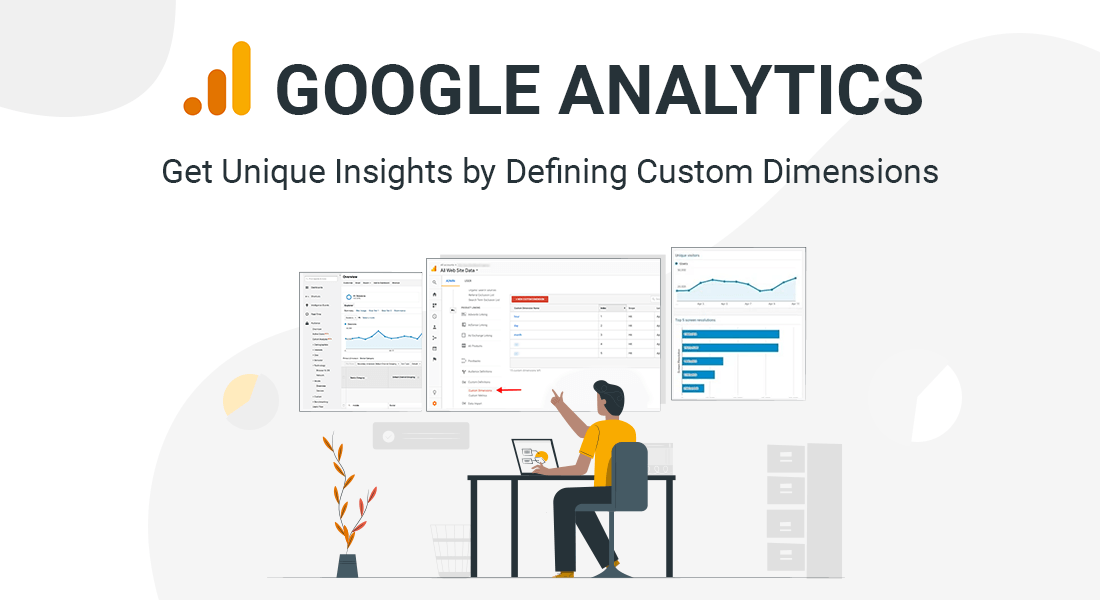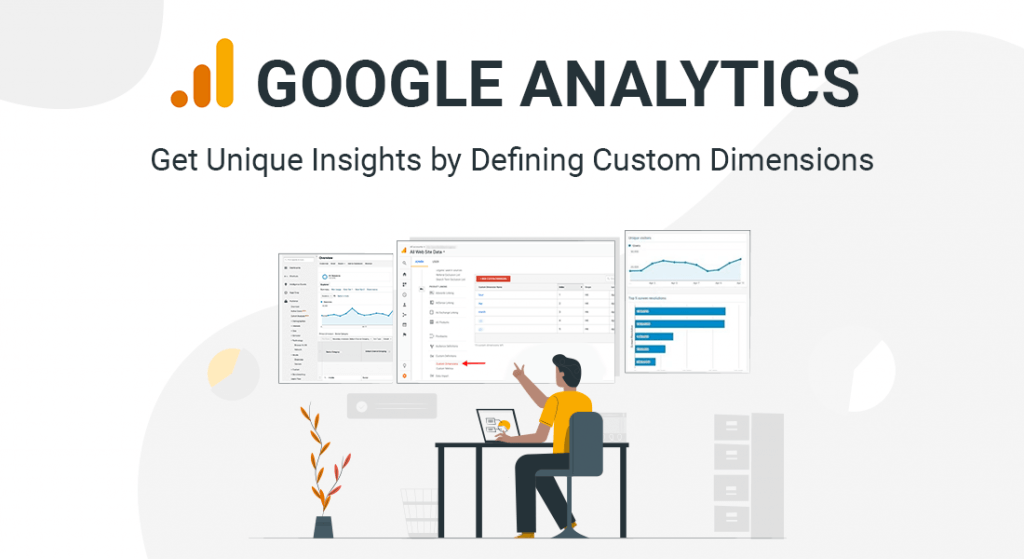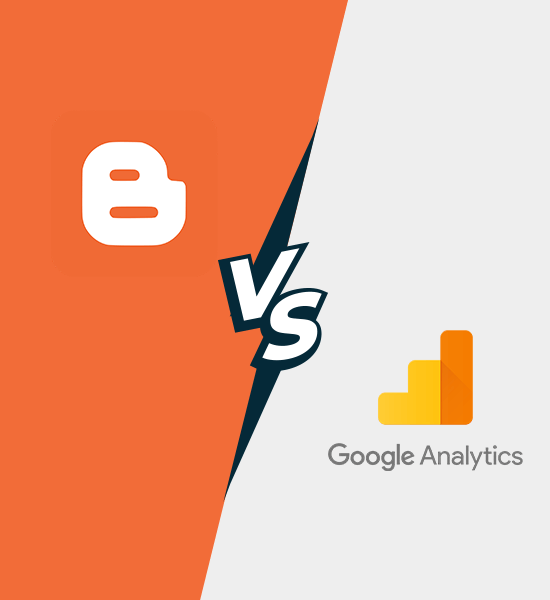



Google Analytics is the best web data analytics service which provides data about all the activities done by users on websites, web apps and mobile applications. With Google Analytics, you can know your customer behavior and plan changes accordingly. Be it a business, service, software or an app, Google Analytics helps you analyze performance of your product or service.
Google Analytics has released new version of Google Analytics called Google Analytics 4. Earlier UA analytics will be replaced by Google Analytics 4 by 2023. GA4 is advanced data tracker which comes with pre-loaded metrics and user’s behavioral data. Existing version of Universal Analytics needs many custom parameters and events to be passed for every piece of information needed. On the other hand, Google Analytics 4 Version has many default events and parameters which makes data measurement easy for layman indeed.


Table of Contents
Google Analytics 4 VS Firebase Analytics
Use Google Analytics like a pro
Should I use Google Analytics or Google Analytics 4?
Google Analytics Customization Setup Tips
Building Custom Segment on Google Analytics 4
Building Active Users’ Report on Google Analytics
Tips to use Google Analytics4 like a professional
Right way of tracking URL redirection on Google Analytics 4
Difference between a custom dimension and a custom metric
Introduction to Custom Dimensions in Google Analytics
set custom dimensions on Google Analytics4
Configure custom dimensions
Blogger stats cannot show two-dimensional data of user flow onto website and blogger stats are not suitable for ecommerce and other important categories. Blogger stats are restricted to only blogs and cannot be applicable to landing pages or any other commercial pages on website. Google Analytics4 is more accurate date and has more error free data.
Firebase is the application development software that helps developers build Android, iOS and Web Applications. While Firebase analytics is the analytics services which is the exclusive sub section of firebase project. Google Analytics in Firebase interface is called Firebase analytics.
It is integrated as sub part of firebase interface. On the other hand, Google Analytics 4 is the standalone version.
Firebase analytics measures mobile and web apps while Google Analytics 4 provides complete information of mobile apps, web apps and websites too.
When it comes to Google Analytics, many beginners feel it is very difficult to understand about the purpose of Google Analytics. The Google Analytics provides information on many user, web and app related activities. Let me give you a clear example
1. Below Picture shows the data of one of our Gtcsys’ clients. The picture below shows the following
Google Analytics’ interface is easy to understand and assess performance of your business, product and service. Contradictorily, one should know how to use analytics like a pro to find the right information with right level of breakdown of information.
You should use Google Analytics 4 instead of Google Analytics (Which is also called as universal analytics). Google announced the closure of Google Analytics and the Google Analytics4 which is already along with Google Analytics will replace the universal analytics by March 2023. Click here for the details of the announcement by google.
Customization on Google Analytics4 is a boon to the user who is more interested to explore user data in depth. Such professionals will customize the interface at the levels allowed by google. Customized data allows company to peek into more detailed analysis of user behavioural data and website/app/webapp performance.
Custom segment is customized set of analytics a company prepares to learn the user behaviour based on chosen metric. For example, let’s say a company XYZ wants customer data of past month. The company wants to know the customers based on location or certain location. They create a custom segment looking for data of customers who visited their site or subscribed to their app for past one month. Such segment is not readily available. Company builds the segment based on location. Such segments are called custom segments.
Step 1: Open Google Analytics4
Step 2: Click Explore on the left side of the menu
Step 3: You will find explorations window after clicking “explore”
Step 4: If you want to build your own custom segment, click “blank form” otherwise you can check the predefined forms of Google Analytics explained below.
Free Form: This prebuilt form gives you details charts and tables with user centric data. Below is the example of segments. You can select the dimensions listed in the interface and find the exclusive data.
Funnel Exploration: This Prebuilt form provides information on how user interacted with different places of website or app. It shows the different footprints of user on website and app.
Funnel Exploration: This Prebuilt form provides information on how user interacted with different places of website or app. It shows the different footprints of user on website and app.
User Exploration: This prebuilt form provides the information on user ID, App OR website address and all activities of user id or machine id wise
Cohort Exploration: This pre built form provides details on user retention data. Cohort shows the information on the rate of repeated visits of users. In the below example, you can understand how cohort reflects the degree of users’ revisiting happened on website. Cohort number is directly proportional to the quality of landing page content and design
Building Active Users’ Report on Google Analytics: Exporting your active user segment data
It is easy to download the data of active users’ reports based on your choice of segment. After choosing type of segment form (explained above), you will find the data generated. There is the download button and you can export it into various formats like pdf/csv etc.
Extracting specific pages data on Google Analytics 4
Sometimes, Company may need to find the performance of specific web pages or specific app screens. Below are guiding steps for data extraction of specific page on Google Analytics 4.
Tip 1: Integration of Custom events and Custom Parameter:
Integrate important custom events with custom parameters either through Google Tag Manager or with the help of Developer. Register these custom parameters as dimensions to learn the data through Google Analytics. The In-depth explanation will be in the coming sections of this article.
Tip 2: Right way of attribution
Be it an Ad Campaign or Organic Campaign, Add UTM parameters and custom parameters (Those you passed them the backend) to the landing page URL. Check “User acquisition” and “Traffic Acquisition under “Acquisition” menu to the left of Google Analytics interface. You will find the data of how your ads campaign is performing. Without doing the said, you will find “Direct” i.e., unknown attributed performance details.
Tip 3: Right way of tracking URL redirection on Google Analytics 4
Everyone wants to know the interaction rate with their landing page. They want to improve the landing page design based on the inputs from landing page performance report.
Step 1: Note the String or query word
Check the landing page URL and find the string or query inserted in the landing page url. Note down the string or query. String or query can be any small word which is present after the domain name. Example string “Mastercard” in the URL “https:// www.xyz.com/mastercard”
Step 2: Open Google Analytics 4 and click engagement and enter pages and screens
Step 3: Now you find all the pages that are mostly visited by the users when they click your ad.
You can find search column above entire table. Enter your string or query copied and you will find all the performance related data of landing page and redirected URL of you choice in the beginning.
Dimensions are the important attributes for any business or service to track the user behaviour, Though Google Analytics4 gives information with many default parameters, there are still some pain points at which there is no information.
Let us understand the Google Analytics definition on custom dimension in more detailed way. Click here for the standard definition of Google Analytics here. Custom dimensions are effective when correctly used to observe and get user activity information
A custom dimension is the attribute we want to get information about. The custom dimension is not ready data on user behaviour. Sometimes, we need certain places of website where analytics4 doesn’t track data. Such places can be “Clicks on website buttons, Transaction Id’s /User Ids/Emails”.
A dimension can be any attribute you want to track on Google Analytics4. Suppose if you want to track users’ mail ids who clicked certain button after filling the forms. You will get the dimension “user_email” on analytics where you can see all the mail ids on Google Analytics4 reports. If you want to track metric, any metric is the custom value passed to track the number. So dimension is of qualitative content and metric is of quantitative content. Dimension gives you details while metrics give you numbers. Let us say you passed metric “mail_id” . You get the number of mail Ids recorded as per the dimension of mail above. T
Simple, Go to Configure (the highlighted icon in the left side bar) and find custom definitions and custom metrics tabs
Setting or Creating /custom dimensions on Google Analytics4 is quite easy with the very smooth interface of Google Analytics4. Custom dimensions need a little time of developer for website or app. Before setting or creating custom events, we need to pass custom events on website or app with the help of developer. Add custom names as per the naming conventions of Google Analytics.
We can create custom dimensions with the help of developer. However, if you are a professional, you can use google tag manager to create Google Analytics custom dimensions. You can also pass data layer tag with custom data layer variables to learn user activity and website/app performance.
Step 1: Consider the name of the custom dimension you want to consider.
For example, if you want to track user source of particular button click, consider name “user_source” or “button_source” or any one which is meaningful and apt as per the button or click’s nature on website or app.
Step 2: pass the custom dimension
After deciding name of the custom dimension, ask your developer to pass the custom dimension using the following code.
Custom Events’ Code for Websites
gtag(‘event’, ‘event_name’, {
‘parameter value1’: ‘parameter value2’, ‘parameter value3’: ‘parameter value4’
});
Here event name is the name you decided on step1. Parameters are the values you want to track Here is the example of the code for website
gtag(‘event’, ‘cart_source’, {
‘user_email’: ‘user_id’, });
You can seek help of developer and give him event name along with parameters.He will pass it at any user action on website. Below are codes for custom events on mobile app platforms.
Custom Events’s code for apps
iOS custom events code
Analytics.logEvent(“share_image”, parameters: [ “name”: name as NSObject,
“full_text”: text as NSObject,
])
Android Custom events code
Bundle params = new Bundle(); params.putString(“image_name”, name); params.putString(“full_text”, text); mFirebaseAnalytics.logEvent(“share_image”, params);
Step 3: Configure Custom dimensions
After ensuring the successful passing of custom event on certain button or action on website, Go to Google Analytics4 and click configure and select custom definitions.
Click ‘create custom dimensions’
Create custom dimensions and you will see this window
Under dimension name, you need to give event name that you passed. Considering the custom event code example of step 2
gtag(‘event’, ‘cart_source’, { ‘user_email’: ‘user_id’,
});
Here the event name “cart_source” should be used as dimension name.
So dimension name is “cart_source” and scope is event type.
Give your description of dimension and why you want to pass it in generic language
Now at the event parameters, you can see drop down list. In the drop down list, all the parameters you already passed in step1 will be visible and you need to choose them.
Let us consider the same example of step 2:
Under ‘cart_soucre’ event, there are parameters ‘user_email’ and ‘user_id’. These are visible in drop down list of parameters. If they are not visible, contact your developer and rectify the mistake.
After selecting parameters, click save.
Wait for more than 24hours and max 48 hours for Google Analytics 4 to show this dimension data on Google Analytics4 reports.
Step 4: Tracking the created Google Analytics custom dimension
After waiting for 24-48 hours, You will see the parameters information tracked on Google Analytics 4.For checking the tracked custom dimension with parameters. Following the steps
Step a: Go to Events tab under ‘engagement’
Step b: You will see the table on the events page
Step c: In the table, click ‘+’ tab on the first column. You will find the following list
Step d: Select custom (event scoped) for dimensions
you will see the passed parameters by developer of your choice. (for reference check step 2)
Step e: Select the parameters
you will find the information tracked by parameters according to the event names
OpenAI DevDay showcases the latest AI innovations, pushing technology’s boundaries in an ever-evolving landscape.
Explore the top 10 database types for software projects, their unique features, and which one…
Explore PWAs: Your FAQs Guide to Integrating Camera, Geolocation & Device APIs. Harness native features…
General Understanding of PWAs and SEO 1. What is a Progressive Web App (PWA)? A…
Understanding Offline-First Approach Basics 1. What is the concept of "Offline-First" in the context of…
General Overview 1. What are cross-platform frameworks, and how do they relate to Progressive Web…